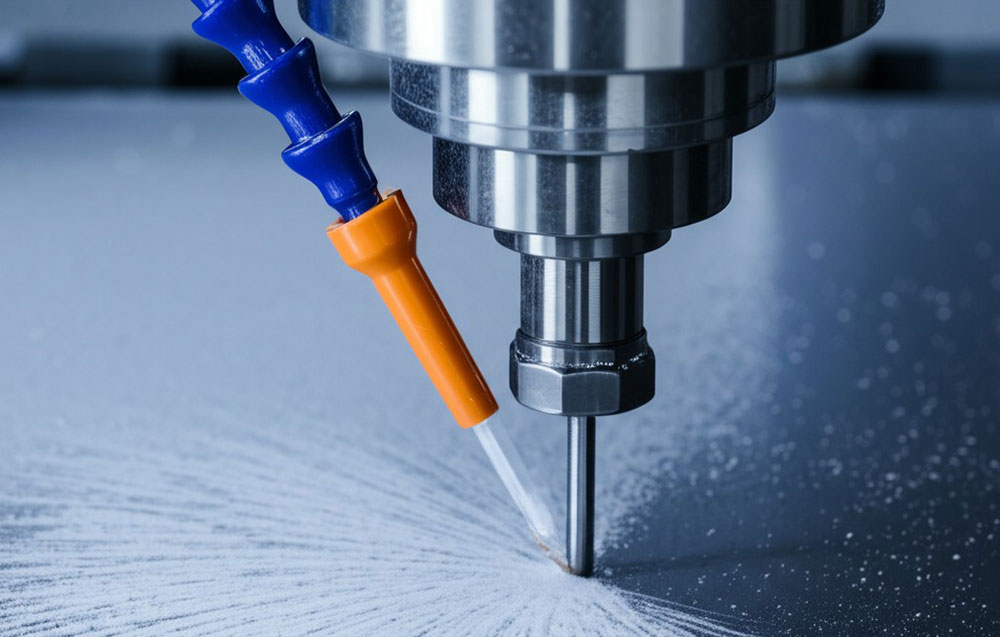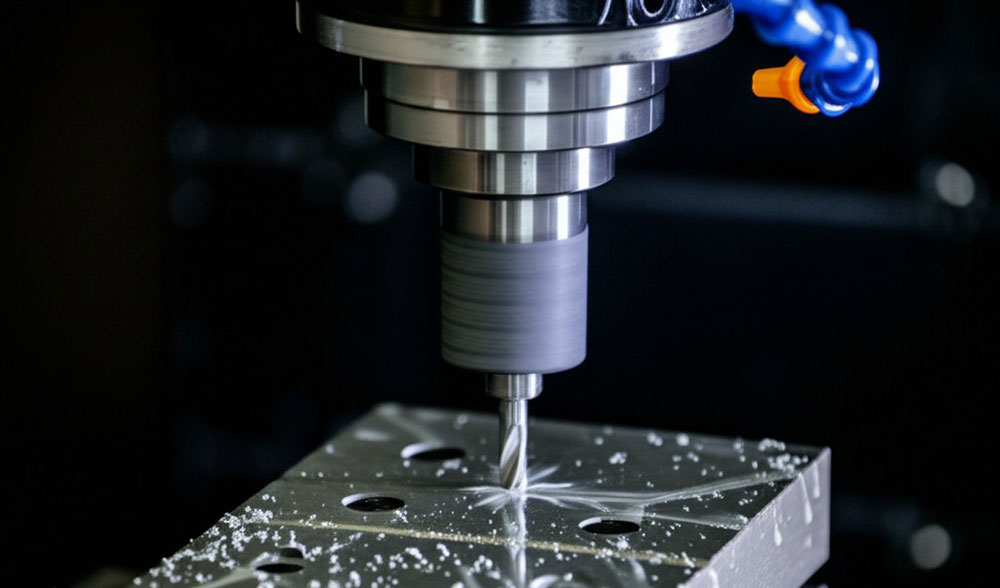CNC Drilling vs. CNC Milling: How Do They Compare?
Introduction:A Comprehensive Guide by a CNC Drilling and Milling Machine Factory
In today’s competitive manufacturing landscape, precision is paramount. Industries such as automotive, aerospace, medical, and consumer electronics demand components produced with extremely tight tolerances and flawless surface finishes. Conventional machining often fails to achieve the precision needed, which is why CNC machining has become indispensable.
This guide provides an in-depth comparison between CNC drilling and CNC milling. We explore their respective processes, applications, advantages, and challenges—helping you decide which method best suits your project needs.

Fundamentals of CNC Machining
What Is CNC Machining?
CNC (Computer Numerical Control) machining is an automated manufacturing process where pre-programmed computer software controls the movement of machinery. It is used to remove material from a workpiece, creating parts with extremely high precision.
- Automation & Accuracy: CNC machines operate on digital commands (G-code), ensuring consistent precision.
- Repeatability: Once a program is set, each part is produced identically, ensuring uniform quality.
- Tight Tolerances: With capabilities reaching tolerances as tight as ±0.001 inches, CNC machining is critical for industries requiring exceptional accuracy.
Introduction to CNC Drilling and CNC Milling
Although both processes use CNC technology, they serve different purposes:
- CNC Drilling:
- Primarily uses a rotating drill bit to create cylindrical holes.
- Focuses on the Z-axis movement to produce precise, consistent holes.
- CNC Milling:
- Utilizes a rotating cutting tool (milling cutter) to remove material from a workpiece.
- Involves multi-axis (typically X, Y, and Z) movements to shape parts, create slots, or finish surfaces.
Understanding these differences is essential when choosing the right process for your application, whether you are working in high-volume production or require custom prototype development from a trusted cnc drilling and milling machine factory.
The CNC Drilling Process

What Is CNC Drilling?
CNC drilling is a machining process that employs a rotating drill bit to remove material and form precise cylindrical holes.
- Automated Operation: CNC drilling machines use computer-generated codes to control drill speed, feed rate, and position, ensuring consistent results.
- Precision & Repeatability: High repeatability ensures every drilled hole is uniform, making it ideal for mass production.
- Key Applications: Widely used in industries for creating mounting holes, bolt holes, and other precise apertures in metal, plastic, and composite materials.
Equipment and Tools in CNC Drilling
Modern CNC drilling machines come equipped with advanced features:
- High-Speed Spindles: Provide rapid rotation for efficient drilling.
- Tool Changers: Allow automatic switching between drill bits for multi-hole operations.
- Real-Time Monitoring: Integrated sensors monitor the drilling process, ensuring quality and reducing errors.
A typical cnc drilling and milling machine factory emphasizes the importance of these tools, ensuring that each machine delivers outstanding performance and precision.
Advantages of CNC Drilling
- Speed: Drilling operations are generally faster than milling, making them ideal for high-volume production of holes.
- Cost-Effective: Lower setup and tool costs contribute to overall cost efficiency, especially for simple, repeated tasks.
- High Consistency: The automation ensures that each drilled hole meets the exact dimensions specified, reducing variability.
The CNC Milling Process

What Is CNC Milling?
CNC milling is a versatile machining process that uses a rotating milling cutter to remove material from a workpiece, producing a variety of shapes and features.
- Multi-Axis Cutting: CNC milling machines can operate on three or more axes, offering remarkable flexibility in design.
- Complex Geometries: The process can create intricate shapes, contours, and surfaces that require high precision.
- High Tolerance Levels: With tolerances as tight as ±0.01 mm, CNC milling is preferred for projects that demand superior accuracy.
Relevant Standards:
- ISO 2768(General Tolerance Standard)
- DIN 7168(Machining Dimensional Tolerances)
- GB/T 1804(Chinese Dimensional Tolerance Standard)
Equipment and Tools in CNC Milling
Modern CNC milling machines are equipped with:
- Advanced CNC Milling Machines: Often available at a china cnc drilling and milling machine factory, these machines feature multi-axis capabilities.
- Variety of Cutting Tools: Including end mills, face mills, and slotting cutters that can handle different materials.
- CAD/CAM Integration: Facilitates the creation of complex designs and precise tool path generation.
Advantages of CNC Milling
- Versatility: Capable of performing various operations such as face milling, slotting, contouring, and drilling.
- Superior Surface Finish: Provides excellent surface quality and fine finishes, essential for high-end applications like aerospace and automotive parts.
- Flexibility in Material Removal: Can handle a wide range of materials, from metals to plastics and composites, due to adjustable cutting depths and angles.
Key Differences Between CNC Drilling and CNC Milling
Material Removal Methods
- CNC Drilling:
- Uses a rotating drill bit to remove material along a single axis (primarily the Z-axis) to create precise cylindrical holes.
- The drill bit’s diameter determines the final hole size.
- CNC Milling:
- Uses a rotating milling cutter that moves along multiple axes (X, Y, and Z) to remove material, allowing the creation of complex shapes and contours.
- Capable of producing flat surfaces, slots, and intricate profiles.
Machine Setup and Flexibility
- Setup:
- CNC drilling machines have simpler setups with fixed workpieces and single-axis movement.
- CNC milling machines require more complex setups with multi-axis alignment and adjustable fixtures.
- Flexibility:
- CNC milling offers greater flexibility in cutting various shapes and features, while CNC drilling is optimized for creating holes.
Cutting Tool Motion and Path Control
- CNC Drilling:
- Linear motion along the Z-axis ensures fast and efficient drilling of uniform holes.
- CNC Milling:
- Multi-axis tool paths enable precise control over the cutting process, allowing for intricate designs and superior surface finishes.
Cost, Energy, and Maintenance Considerations
- Cost Efficiency:
- CNC drilling is generally less expensive due to its simpler setup and lower tool costs.
- Energy Consumption:
- Drilling machines typically consume less energy compared to milling machines due to simpler motion and lower power requirements.
- Maintenance:
- CNC milling machines require more frequent maintenance because of the complexity of their moving parts and higher wear on cutting tools.
Comparison Summary
Below is a summary table comparing key aspects of CNC drilling and CNC milling:
| Aspect | CNC Drilling | CNC Milling |
|---|---|---|
| Material Removal | Uses rotating drill bits for cylindrical holes | Uses rotating milling cutters for complex shapes and surfaces |
| Machine Setup | Simple, primarily single-axis (Z-axis) | Complex, multi-axis (X, Y, and Z) requiring precise alignment |
| Speed | Faster for creating holes | Slower due to intricate tool paths and multi-axis movements |
| Cost Efficiency | Lower setup and tool costs; energy efficient | Higher costs due to advanced tools and multi-axis operations |
| Surface Finish | Adequate for holes, may require post-processing | Superior surface finish, ideal for high-quality parts |
| Flexibility | Limited to drilling holes | Highly versatile: can create flat surfaces, slots, contours, etc. |
Applications and Industry Use Cases

Applications in the Automotive Industry
Automotive manufacturers rely on both CNC drilling and CNC milling for various components:
- CNC Drilling:
- Used for creating precise bolt holes, mounting points, and fluid passages in engine blocks and chassis components.
- CNC Milling:
- Essential for producing complex engine parts, custom brackets, and intricate dashboard components with high precision.
Applications in the Aerospace Sector
Aerospace components demand the highest precision and surface finish:
- CNC Drilling:
- Used for accurately creating holes for fasteners and internal channels in aircraft structures.
- CNC Milling:
- Critical for machining turbine blades, complex fuselage sections, and other high-precision components.
Applications in Medical and Defense Industries
Both drilling and milling are integral to the production of specialized components:
- Medical Devices:
- CNC drilling is used for precise bore creation in implants and surgical instruments.
- CNC milling produces custom parts with complex geometries for diagnostic equipment.
- Defense Equipment:
- CNC drilling ensures the creation of critical holes for assembly in defense hardware.
- CNC milling is vital for manufacturing components that require intricate design and robust material properties.
Best Practices for Collaboration with a CNC Drilling and Milling Machine Factory
Establishing Clear Communication Channels
Effective collaboration begins with transparent communication:
- Regular Updates: Schedule periodic meetings to review project progress and address any issues.
- Dedicated Managers: Assign project managers from both sides to streamline communication.
- Digital Platforms: Use cloud-based project management tools for real-time updates and file sharing.
- Virtual Meetings: Conduct video conferences regularly to discuss milestones and quickly resolve issues.
Defining Detailed Project Requirements
Clear specifications lead to successful outcomes:
- Comprehensive Documentation: Provide detailed design briefs, including technical drawings, CAD models, and tolerance requirements.
- Iterative Reviews: Hold regular design review sessions to fine-tune the project.
- Visual Aids: Utilize diagrams and tables to clearly communicate complex requirements.
Leveraging Advanced Digital Tools
Modern digital tools can streamline collaboration:
- Cloud Collaboration: Share design files and project updates via secure cloud platforms.
- Virtual Meetings: Regular video conferences help maintain alignment and swiftly resolve issues.
- Real-Time Monitoring: Implement digital dashboards to track key performance metrics during production.
Monitoring Quality and Performance
Continuous quality control is essential:
- Quality Audits: Conduct regular inspections to ensure production standards are met.
- Performance Metrics: Track cycle times, defect rates, and overall machine performance.
- Feedback Loops: Establish channels for continuous improvement based on client and supplier feedback.
- Joint Improvement Plans: Collaborate with your supplier to implement process enhancements.
Conclusion
Deciding between CNC drilling and CNC milling requires careful evaluation of your project’s material, precision requirements, and complexity. CNC milling is ideal for intricate designs and high-quality surface finishes, while CNC drilling excels at quickly producing precise holes. Both techniques enhance production speed, reduce human error, and ensure consistent quality across large volumes.
By partnering with our cnc drilling and milling machine factory, you can leverage our advanced technology and industry expertise to optimize your manufacturing process. We are dedicated to providing you with cost-effective, high-precision machining solutions tailored to your unique needs.
Contact Us Today!
Ready to elevate your manufacturing capabilities? Contact us now to discuss your project requirements and discover how our advanced CNC drilling and milling solutions can give you a competitive edge.
Frequently Asked Questions
Q1: What is a cnc drilling and milling machine factory?
A: A cnc drilling and milling machine factory specializes in manufacturing advanced CNC machinery designed for drilling and milling operations. These factories use cutting-edge technology to produce machines that deliver high precision and consistency across various industries.
Q2: How does a china cnc drilling and milling machine ensure precision?
A: Precision is achieved through state-of-the-art CAD/CAM integration, advanced CNC machining tools, and rigorous quality control protocols. This ensures every component is produced within tight tolerances, making them ideal for high-precision applications.
Q3: What are the primary differences between CNC drilling and CNC milling?
A: CNC drilling primarily creates cylindrical holes using a rotating drill bit along the Z-axis, while CNC milling employs rotating cutting tools along multiple axes (X, Y, and Z) to shape, contour, and finish complex geometries.
Q4: Which applications benefit most from CNC milling?
A: CNC milling is ideal for producing components with intricate shapes, detailed contours, and superior surface finishes. It is widely used in aerospace, automotive, and medical industries where precision is critical.
Q5: Can CNC drilling and milling be integrated into the same production line?
A: Yes, many modern facilities combine both CNC drilling and milling capabilities. This integration enhances overall production efficiency, reduces setup times, and ensures a seamless manufacturing process for diverse components.
Q6: How do I choose the right cnc drilling and milling machine factory for my needs?
A: Evaluate the supplier’s technical capabilities, production capacity, quality certifications, communication practices, and track record. A reputable factory, like a leading china cnc drilling and milling machine provider, will demonstrate advanced machinery, flexible production options, and exceptional customer service.
